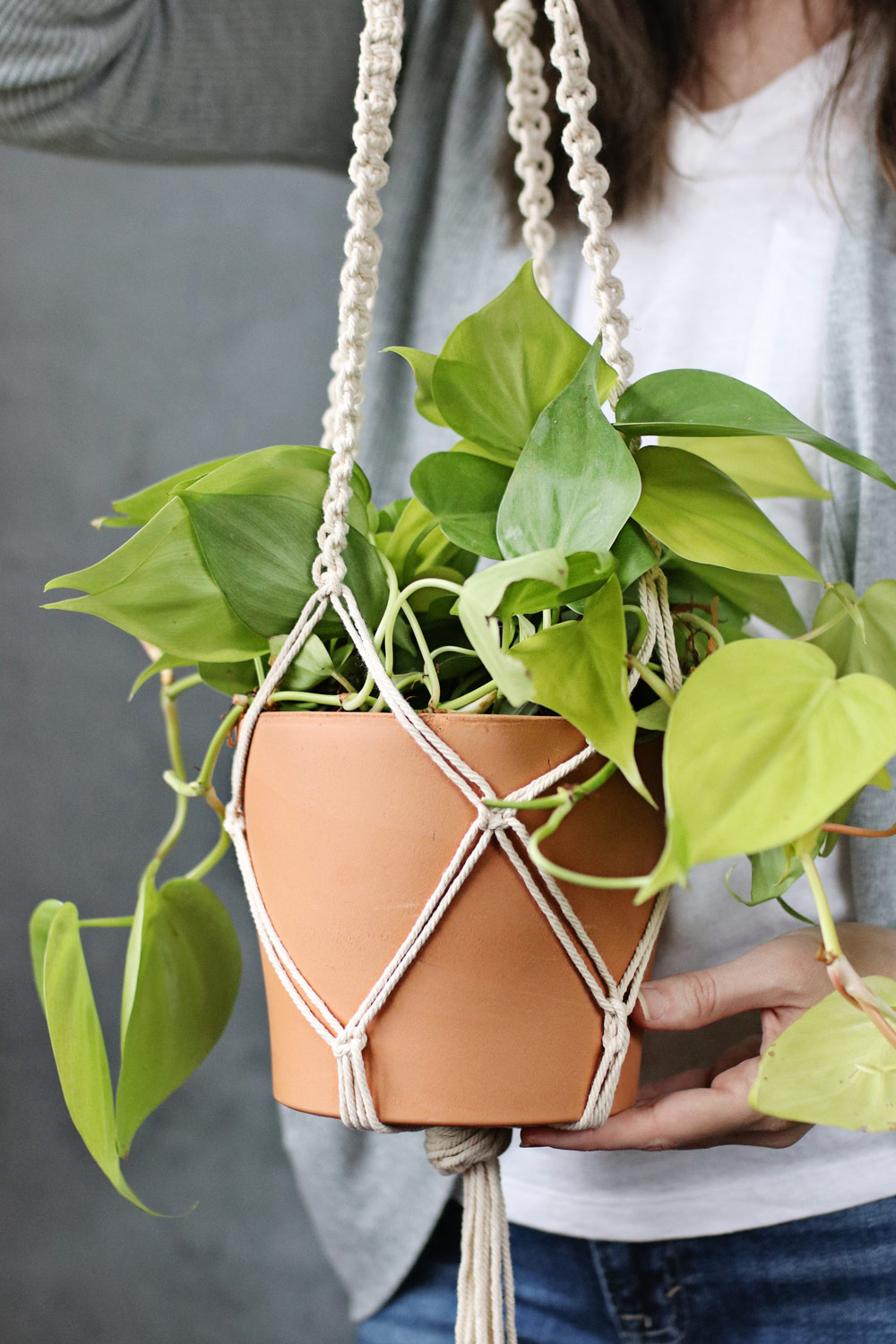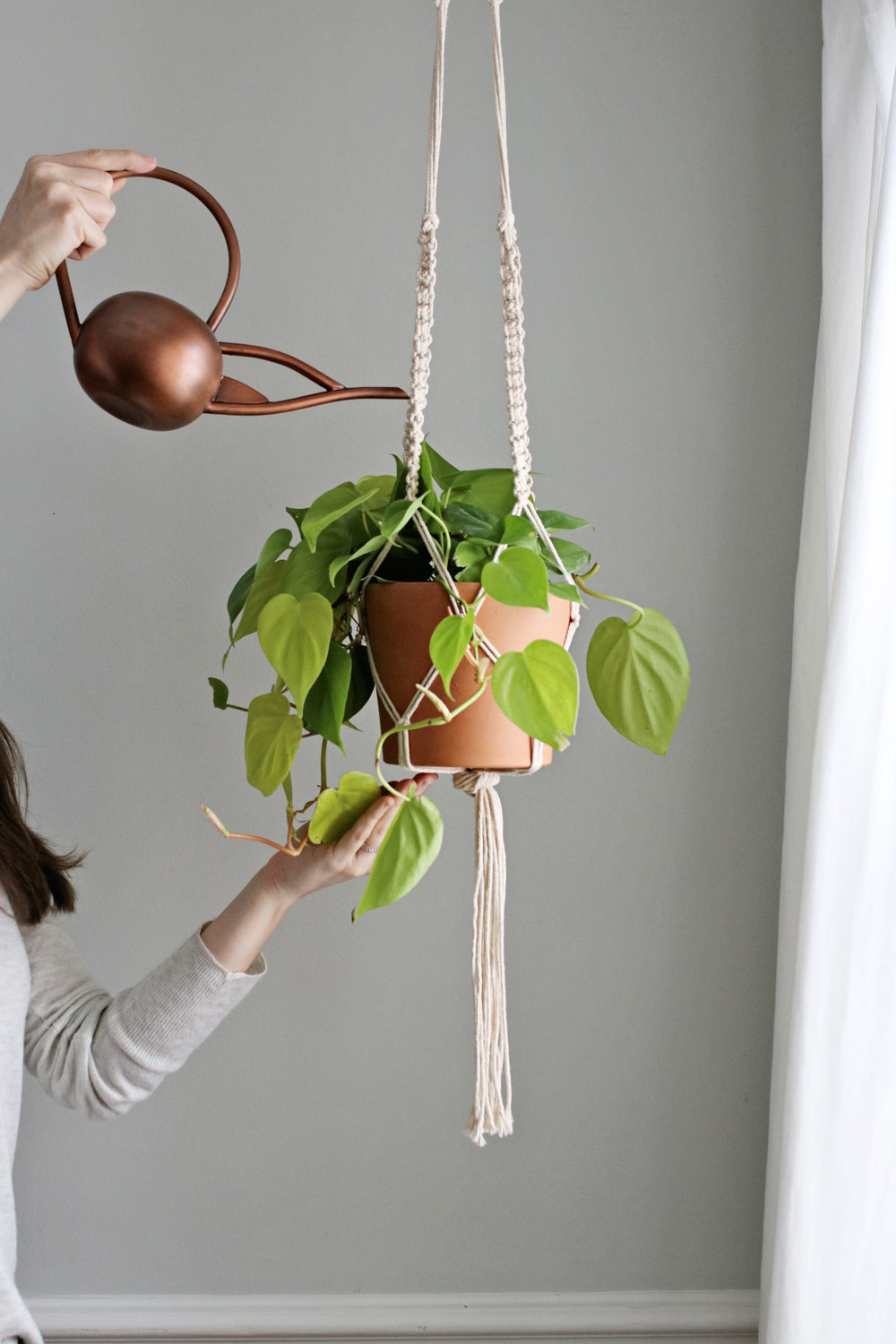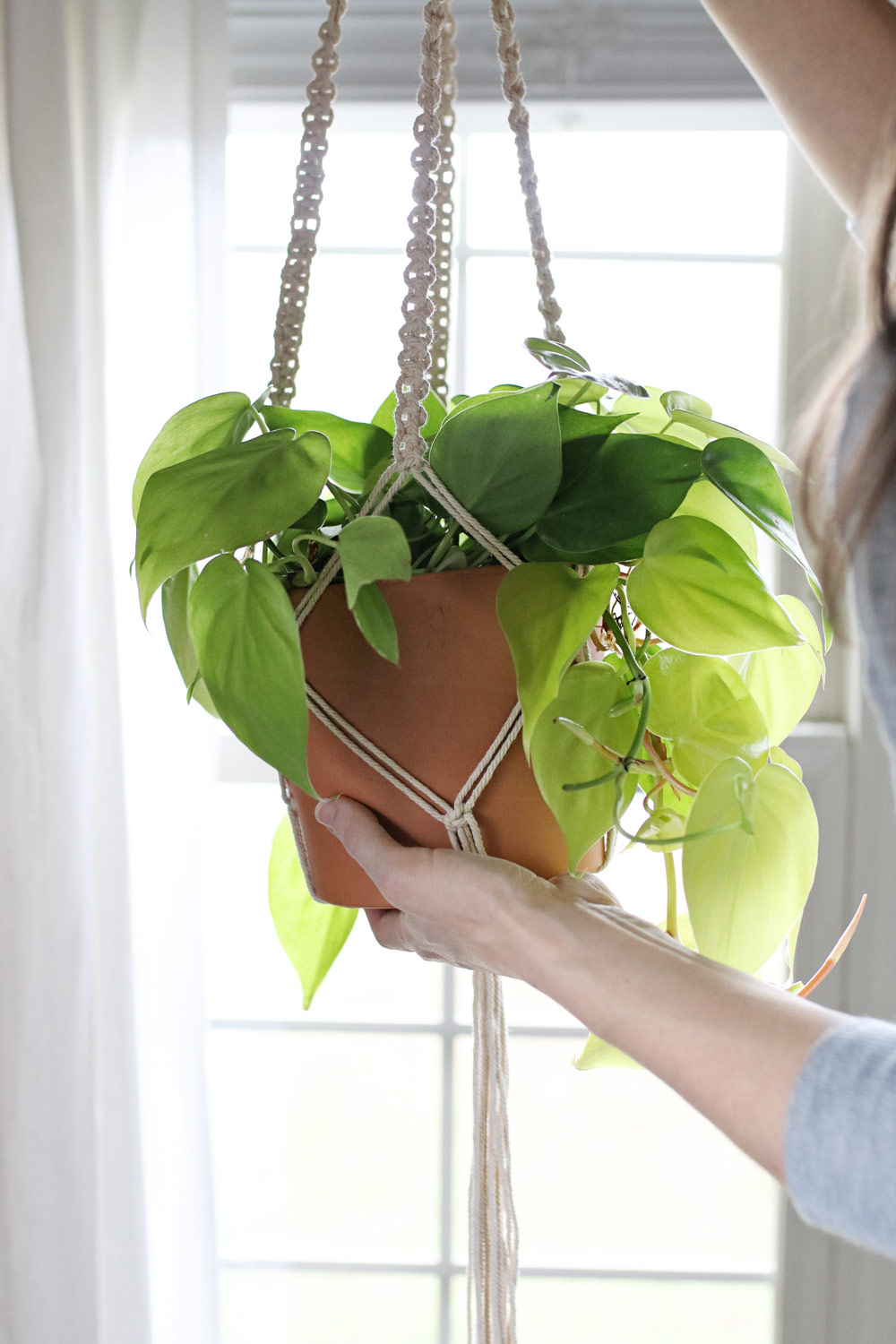So you have a pothos plant, and you dutifully provide it with light and water…so why are you finding yellow leaves? Even though pothos is considered a relatively easy plant to care for, despite our best intentions we may end up seeing signs that things aren’t quite right. The appearance of yellow leaves is one of those signs, and though your plant is sending out an alert that something’s up, you’ll need to do a little digging to see which of the possible causes is the culprit.
Take a read through our list of the most likely reasons you’re finding those yellowing leaves. Don’t lose heart…most plants are surprisingly resilient and can rebound back from stressors if we get at them in time.

Why are my pothos leaves turning yellow?
The first thing you’ll need to establish is whether or not your plant is otherwise healthy. If the other pothos leaves are abundantly green and waxy, and it seems to be growing well with only the occasional leaf turning yellow, this could just be the natural aging process of the plant as it moves to release and let go of the oldest leaves. Just allow the plant to drop these on its own, no need to remove them.
Check your watering schedule
The most likely issue behind the yellowing of leaves is the watering—either too much, or not enough.
If your pothos is under-watered, the soil will feel light, crumbly, and dry, and the leaves will yellow and turn brown in a dry/crispy texture. You may also notice that the green leaves look dry around the edges and weak.
If this is the case, stay on top of the watering schedule, and be sure to give your plant a thorough drink once the soil has only dried down about an inch. Keep the pot elevated in the dish, or pour out surplus water that’s collected beneath it after each watering.
On the other end of the spectrum, if you water too often or leave the plant to sit in a puddle after each watering, you could be drowning it. In this case, your soil is likely damp at the top and may smell like mildew, green leaves will look wilted, and the yellowing leaves may be numerous and could also have brown spots.
The obvious fix is to allow the soil to dry out before each watering (be sure it has dried down at least an inch; if the surface is still moist, don’t water!).
You’ll also want to see that there’s enough sunlight which helps the moisture to evaporate from the soil. Check to see that the drainage hole at the bottom is clear. I like to elevate all of my plant pots above their water dish with small pebbles so that after watering, I know they aren’t left swimming.
Never leave your pothos to sit in a plate of water!
Root Rot
Related to overwatering is the problem of root rot, thought it can also be caused by a fungus which thrives in moist soil. Like you’ll see with overwatering, many of the leaves will be yellowing, falling off prematurely, and in this case, the roots will also be soft and mushy and break off too easily with the soil.
Gently slide the plant out of the pot and take a good look at the condition of the roots. If you see clearly that they are no longer healthy and firm and able to keep their shape, you’ll need to tend to the roots and repot as soon as possible.
Proper drainage and new soil is key! Read more on how to treat root rot here.
Pot Size
Another reason your pothos could be turning yellow is if it has outgrown its pot and become root bound. Like any other plant, it will eventually grow and reach the limits of a small pot, and you’ll know it’s time to move it to a larger size when you can see the roots reaching out at the top of the soil, or if roots are clustered tight or poking out around the drainage hole. For tips on how to repot your pothos without doing further damage, check out our piece here.
Bacteria
If you’re noticing soft brown spots with the yellowing, you could be dealing with bacterial leaf spot. This can become a problem if you overwater, or if the plant is stressed such as when it’s been dry for long periods and suddenly overwatered.
Too much ambient humidity could also lead to problems. Be sure to water directly into the soil rather than over the leaves, ensure proper drainage, follow a watering schedule, and remove the affected leaves.
Light Exposure
While pothos is a pretty forgiving plant in terms of its needs and wants, and can generally do well in low or high light exposures, a bright or medium-bright spot with indirect sunlight is best. If your pothos has been living in a dim environment with very little natural light, it could be the reason you’re seeing the yellow leaves.
Be careful not to situate your pothos is direct sunlight (especially after having been in a dim space) as this could cause the leaves to burn.
Pests
Take a look around the plant for signs of mites or other bugs. If your plant is already weakened due to poor watering routines or weak light and humidity issues, the impact of the pest can overwhelm an already stressed pothos. You’ll want to get on top of the pests and any other underlying stressors as soon as possible to nurse your plant back to health.
With a little bit of sleuthing, you can get right down to the primary cause of your yellowing pothos. In some cases, there could be a combination of issues that need to be addressed. Too much water can lead to root rot and open the door to further infections and pests, piling one stressor upon another.
Your best bet is to start with better drainage, appropriate light, and double check for dry-down before you even think of giving it another drink. With a keen eye and some TLC, your pothos can be ushered back to its full green glory in no time!
3

Leave a Reply